As the train crosses the Farakka Barrage and enters the Malda district, the scenario on both sides of the railway track undergoes a subtle change. Crop fields give way to a countless number of orchards of neatly pruned, rounded mango trees. The name Malda invariably reminds us of luscious mangoes. Such is the fame of her mangoes that the words Malda and mangoes have somewhat become synonymous with each other.
However, it is unwise to restrict discussions on Malda solely to its mango varieties. This district, which is often called the gateway to North Bengal, was once the capital of Bengal itself. Hence, it boasts archaeological ruins of an era when it acted as Bengal’s seat of power. Unfortunately, the historical remains of Malda have not garnered much attraction unlike its more popular neighbour, Murshidabad.
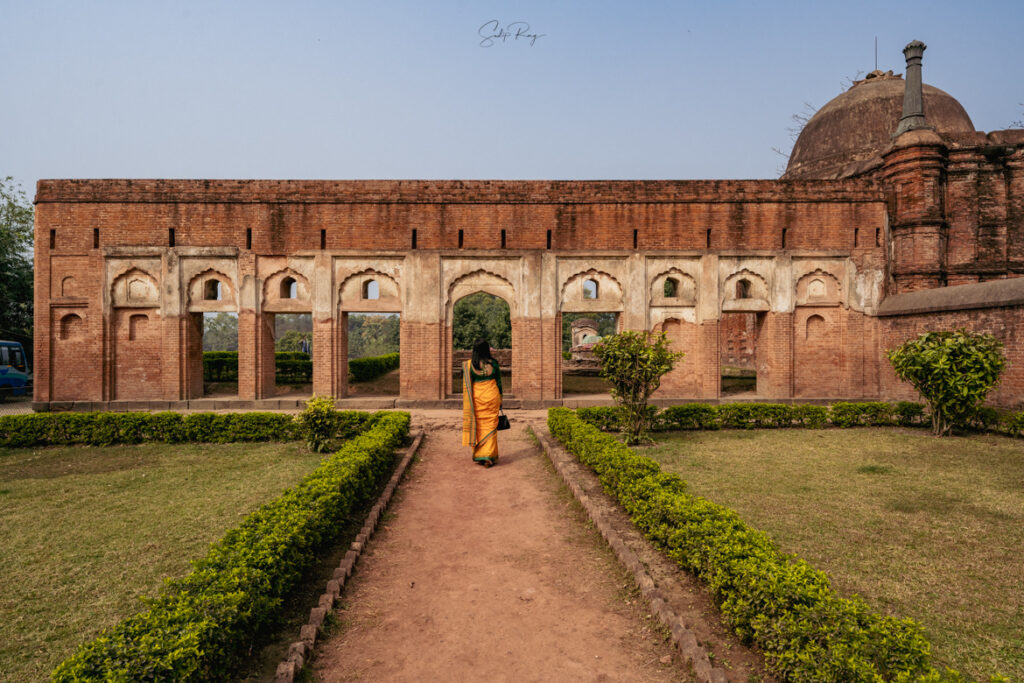
Table of Contents
Where is Malda located:
Malda is a district in West Bengal, lying around 350 km north of its capital city, Kolkata. The district headquarters is English Bazar, also known as Malda Town. The tourist attractions of Malda are mostly concentrated in Gour (17 km south of English Bazar) and Adina (16 km north of English Bazar).
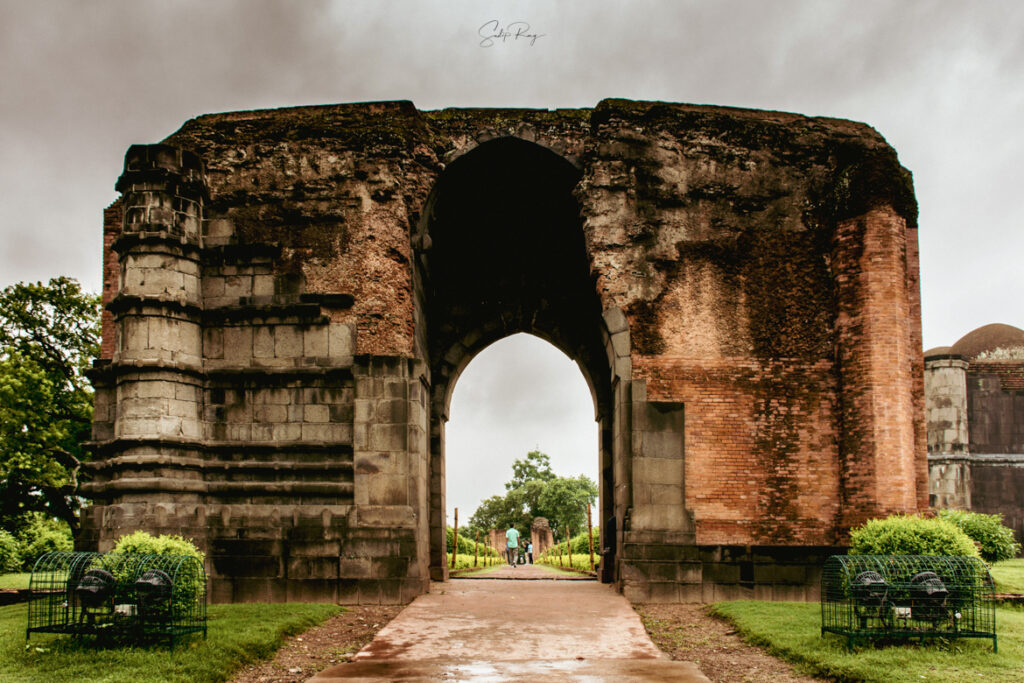
History of Malda:
From time immemorial, Malda was known by various derivatives of the word Gour. It is generally believed that, the word Gour came from ‘gur’ or jaggery since this region always flourished in the production of date palm jaggery.
Gour finds its mention in Panini’s Ashtadhyayi as Gourapura. The region was ruled by the Mauryan and Gupta rulers until the rise of Sasanka. Sasanka was the first independent ruler of Gour or Gauda. With his capital at Karnasuvarna, he ruled Gauda for three decades. After the Matsyanyaya which followed the demise of Sasanka, the Palas ascended the throne in the middle of the 8th century.
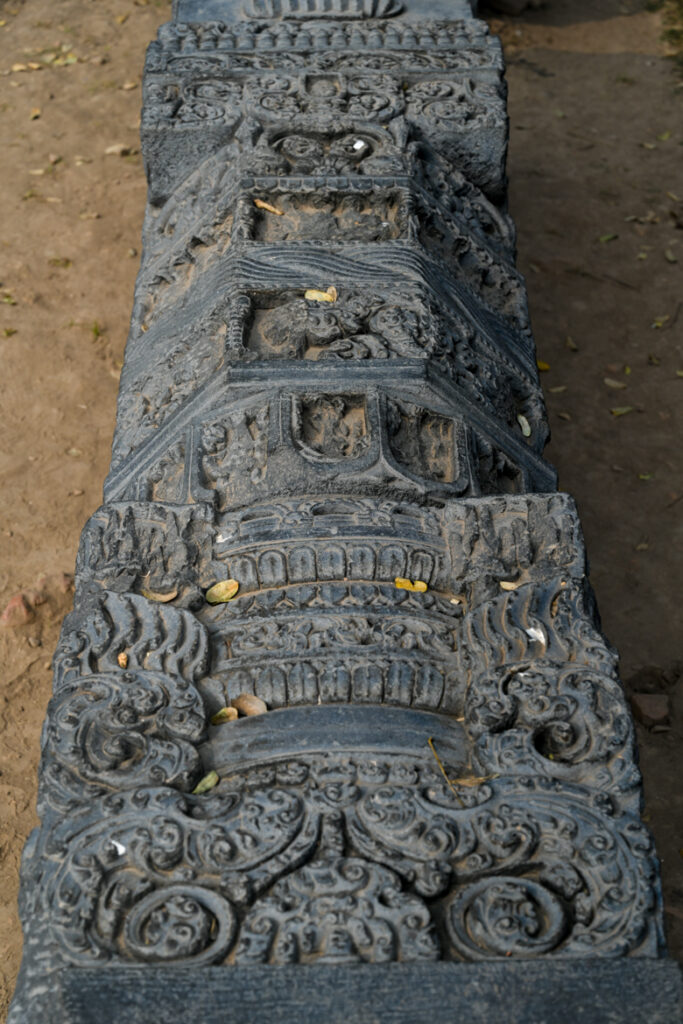
During the reign of the Pala rulers, Buddhism received a strong foothold in Gauda as well and art and architecture flourished under royal patronage. Also, many Buddhist monasteries sprang up in this area, particularly in Devikot (present-day Dakshin Dinajpur) and Nandadirghi (modern Malda).
The Pala dynasty was followed by the orthodox Sena dynasty, who were exponents of Brahmanical Hinduism. During the reign of Lakshmana Sena, Gauda was renamed Lakshmanavati after its king. It was also in his time that Bakhtiyar Khilji invaded Bengal which led to the foundation of Muslim rule.
Afterwards, the Sultans of Ilyas Shahi and Hussain Shahi dynasties ruled over Gour, with their capitals at Lakhnauti and Pandua. The relics of the architectural achievements of the Sultanate are still present in Malda and are regarded as its top attractions. Later, the Mughals shifted the capital of Bengal to Dhaka owing to the change in course of the Ganges. With this, Gour gradually faced its downfall.
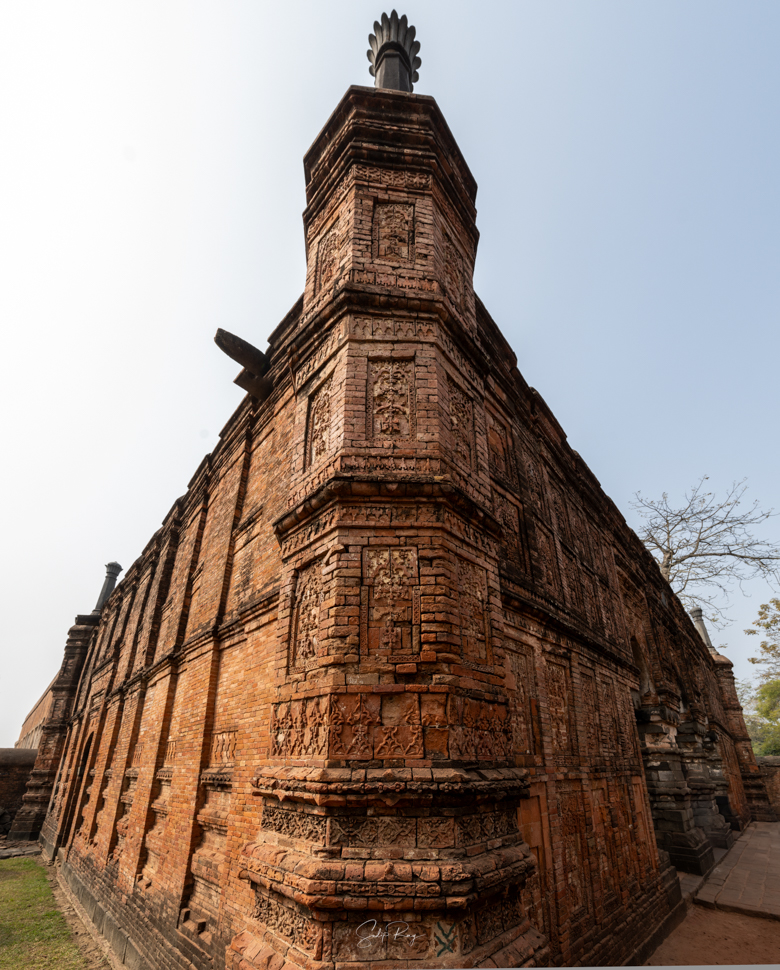
Places to visit in Malda:
The places of interest in Malda can broadly be discussed in two sections:
Gour:
Major portions of Malda’s tourist attractions are located in and around Gour. You must visit the following places to enjoy the essence of Malda:
Lukochuri Gate:
Built by Shah Jahan’s son Shah Shuja in 1655, this entryway is a specimen of Mughal architecture in Malda. The name is derived from the game of hide and seek. It is locally believed that the Sultans used to play hide and seek here with their courtesans.
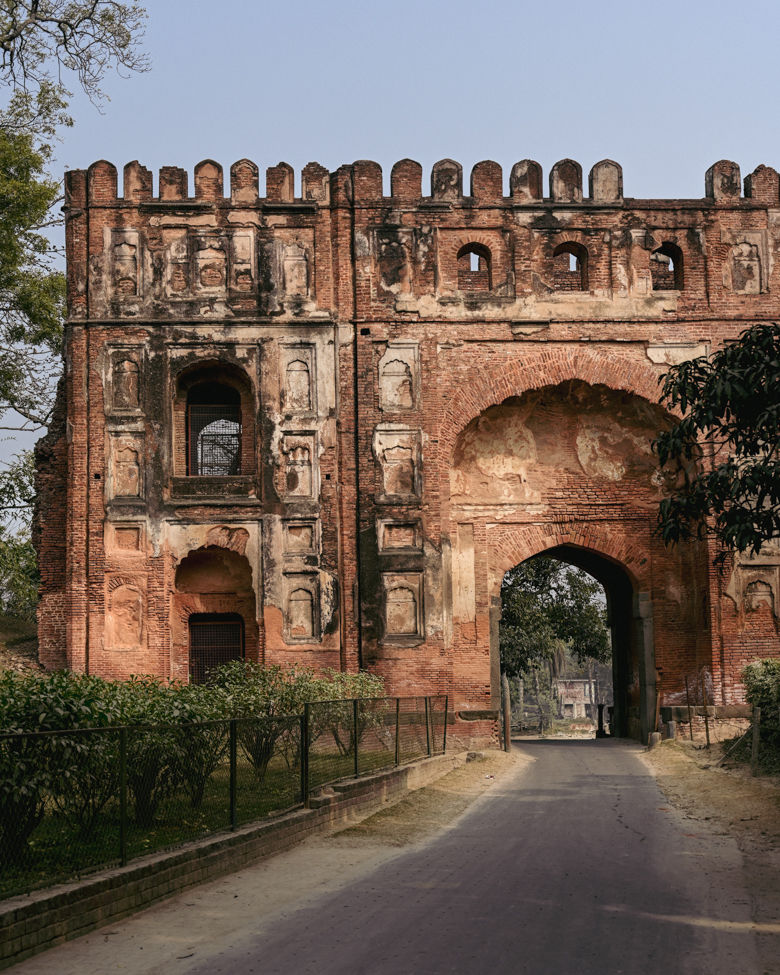
Chika or Chamkan Mosque:
It was built by Sultan Yusuf Shah in 1475. After its desertion, it became infested with numerous bats or ‘chika’, hence the name. Though referred to as a mosque, it was originally a mausoleum.
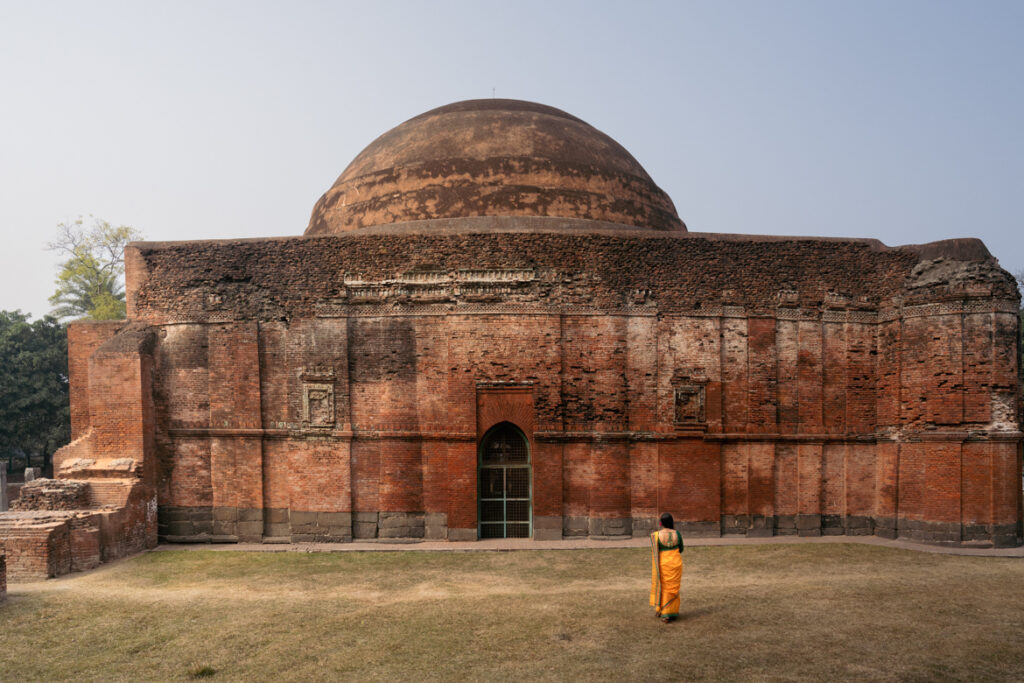
Sultan Hussain Shah used this structure as a prison. It is commonly believed that he had imprisoned his Hindu ministers, Roop and Sanatan Goswami here.
Gumti Darwaza:
Sharing the same premise with the Chika Mosque, it once served as the eastern gateway to the citadel of Gour. Built by Hussain Shah in 1512, this single-domed structure is decorated with enamelled bricks.
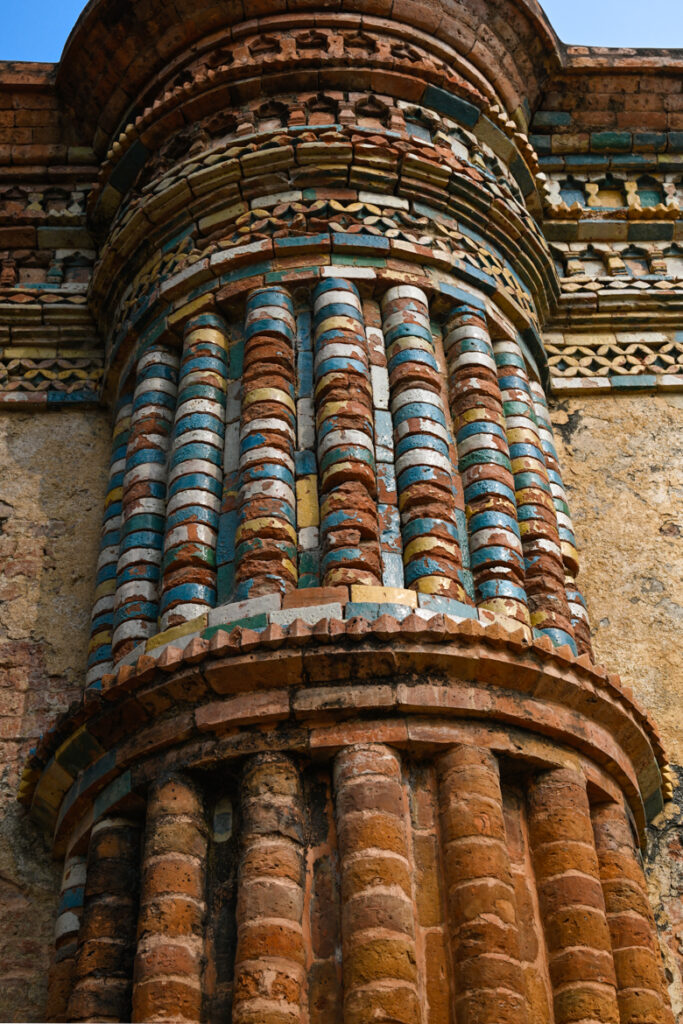
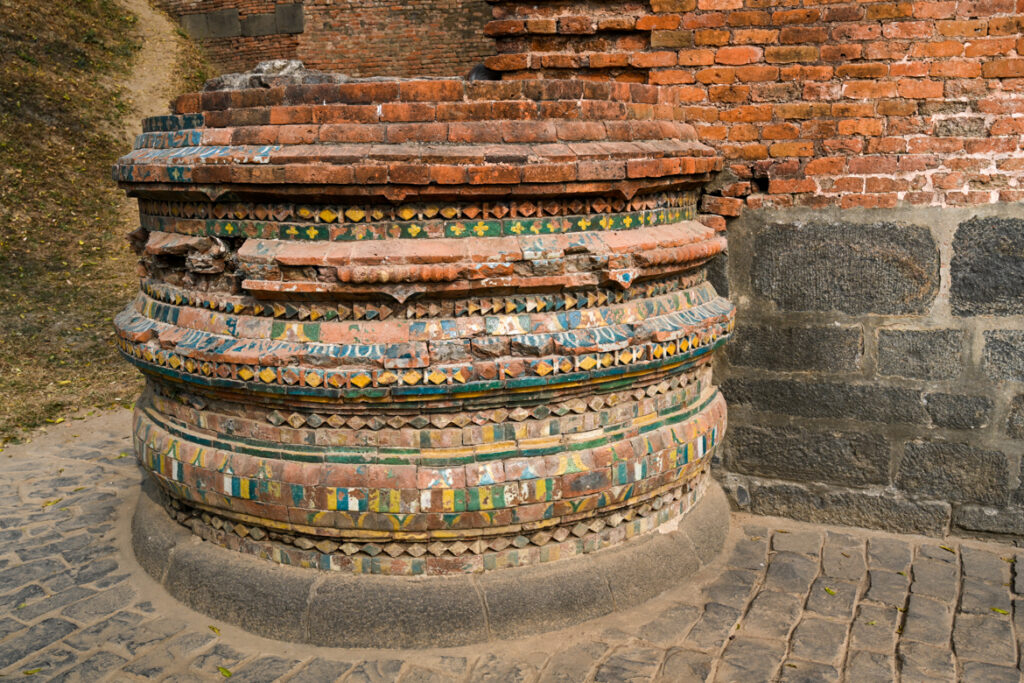
Kadam Rasool Mosque:
Built in 1530 by Sultan Nusrat Shah, this mosque houses the footprints of the Prophet Muhammad. Hence, it is named Kadam Rassol (which literally means feet of the Prophet). Made with ornamented bricks, the structure of this mosque resembles that of traditional brick temples of pre-Islamic Bengal.
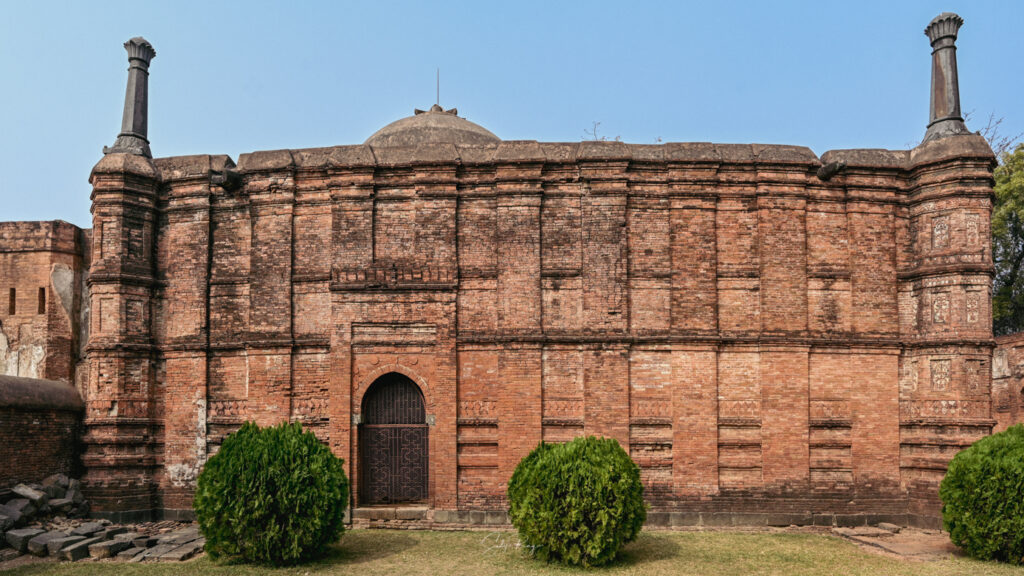
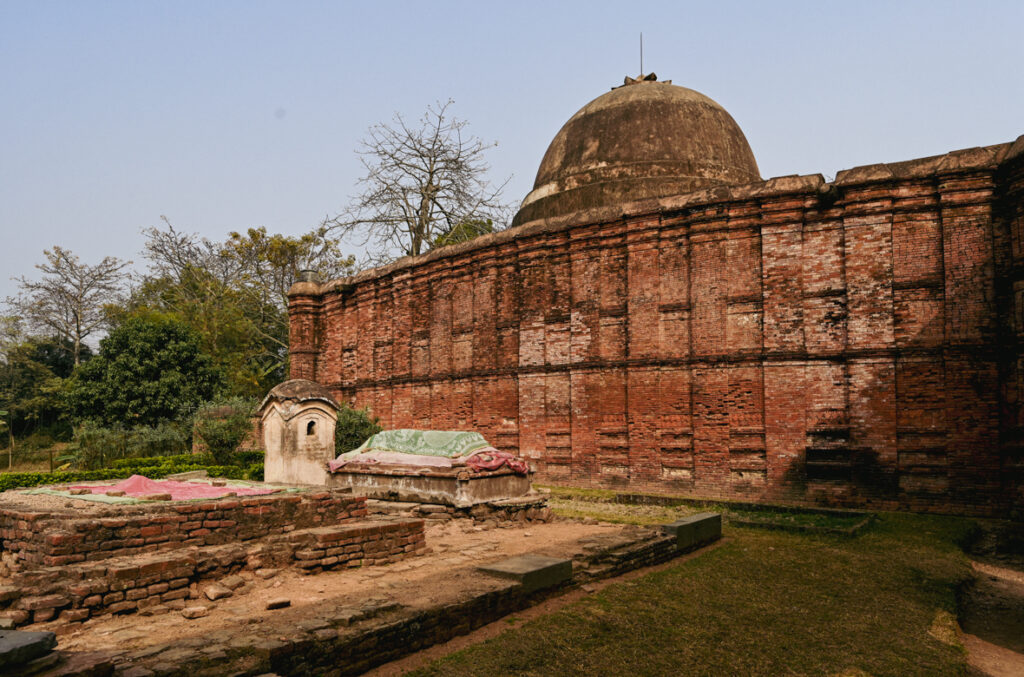
Tomb of Fateh Khan:
Right beside the Kadam Rasool Mosque lies the tomb of Fateh Khan, son of one of Aurangzeb’s military generals. Interestingly, the tomb is built in ‘do-chala’ or twin-roofed style of Bengal’s temple architecture.
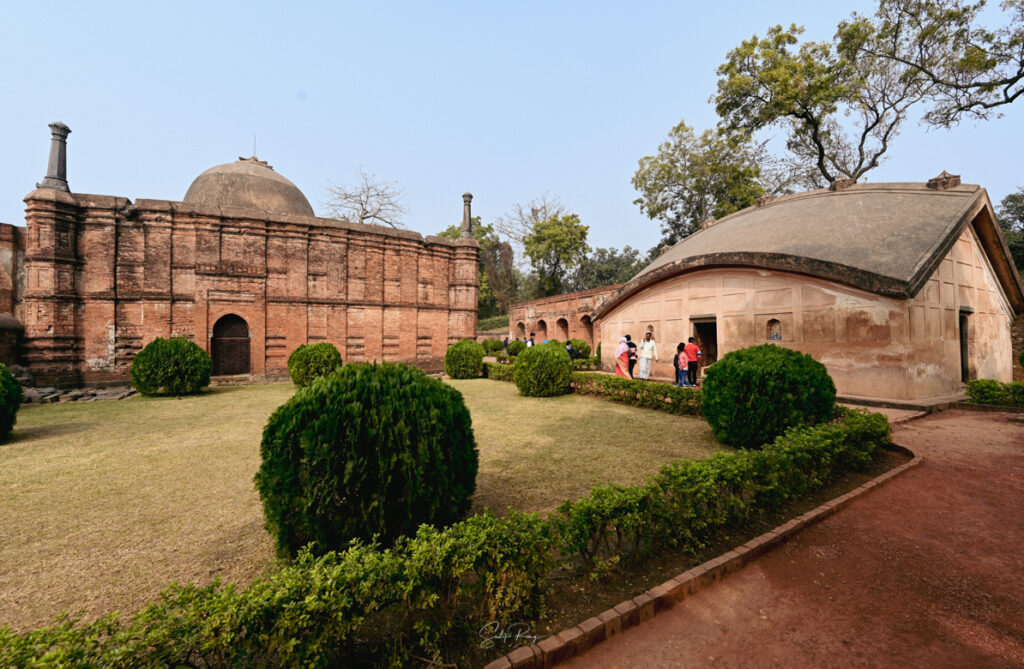
Firoze Minar:
This is one of the most famous attractions of Malda. This 5-storied tower was commissioned by Saifuddin Firoze Shah, the Habshi or Abyssinian commander of the royal army, who himself became the Sultan after assassinating Sultan Jalaluddin Fateh Shah.
Inspired by the Tughlaqi style of architecture, this elegant tower resembles the Qutb Minar of Delhi. The 84-foot tower has 73 steps to reach its top. As per local lore, Firoze Shah executed the chief architect by tossing him from the top of the tower as the Sultan was dissatisfied with its height.
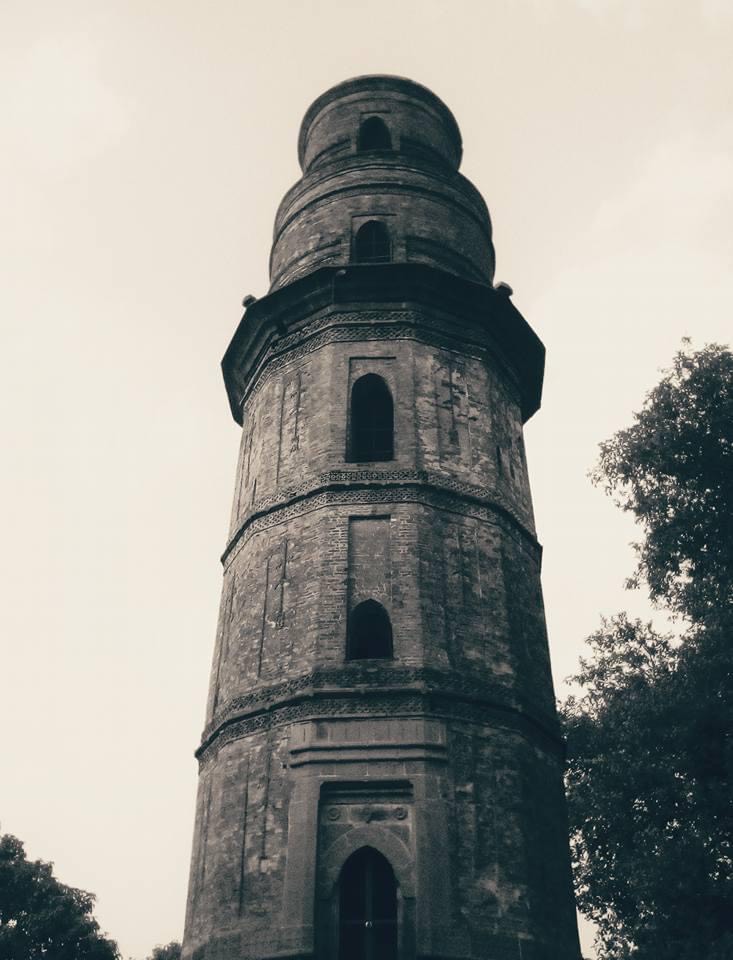
Dakhil Darwaza:
This grand gate served as the main entrance to the citadel of Gour. Although this grand gate is well past its heyday, there is hardly any doubt that it was one of the most magnificent structures of the Sultanate era. Also known as Salami Darwaza, it was completed in 1425. This lofty gate was built with terracotta and small red bricks. It towers at a height of 21 m with a width of 34.5 m.
Baro Shona Mosque:
Another brilliant specimen of Sultanate architecture, the name of this mosque translates to the great golden mosque. It also goes by the name of Baroduari Mosque (a mosque with twelve gates). The construction of this once splendid mosque began during the reign of Hussain Shah and was completed by the time of his son, Nasiruddin Nusrat Shah. It was commissioned in honour of Saint Nur Qutb – E – Alam, and hence the mosque is also termed as Qutb Shahi Mosque.
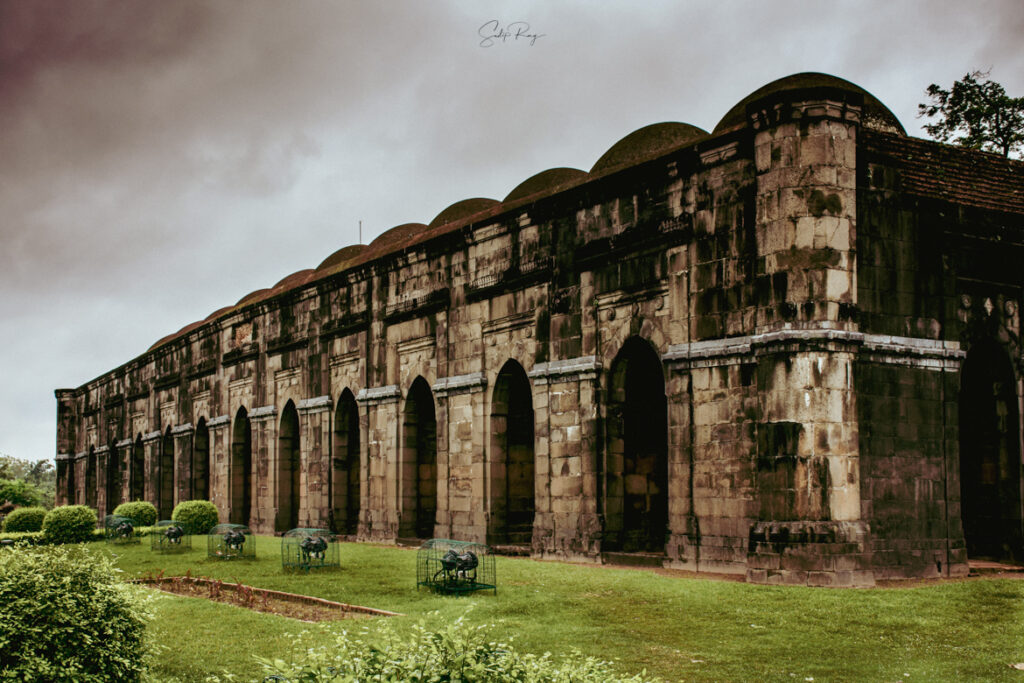
The mosque is composed of eleven gates, two buttresses, four corner towers, and a spacious courtyard. It is called Baro Shona Mosque owing to its gilded wall surface and crowns of the turrets.
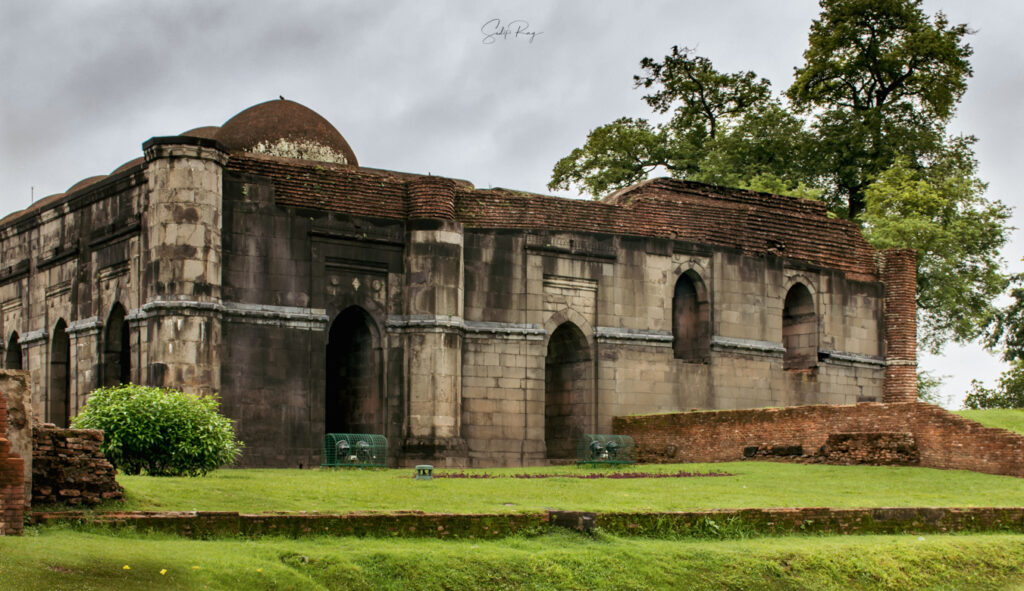
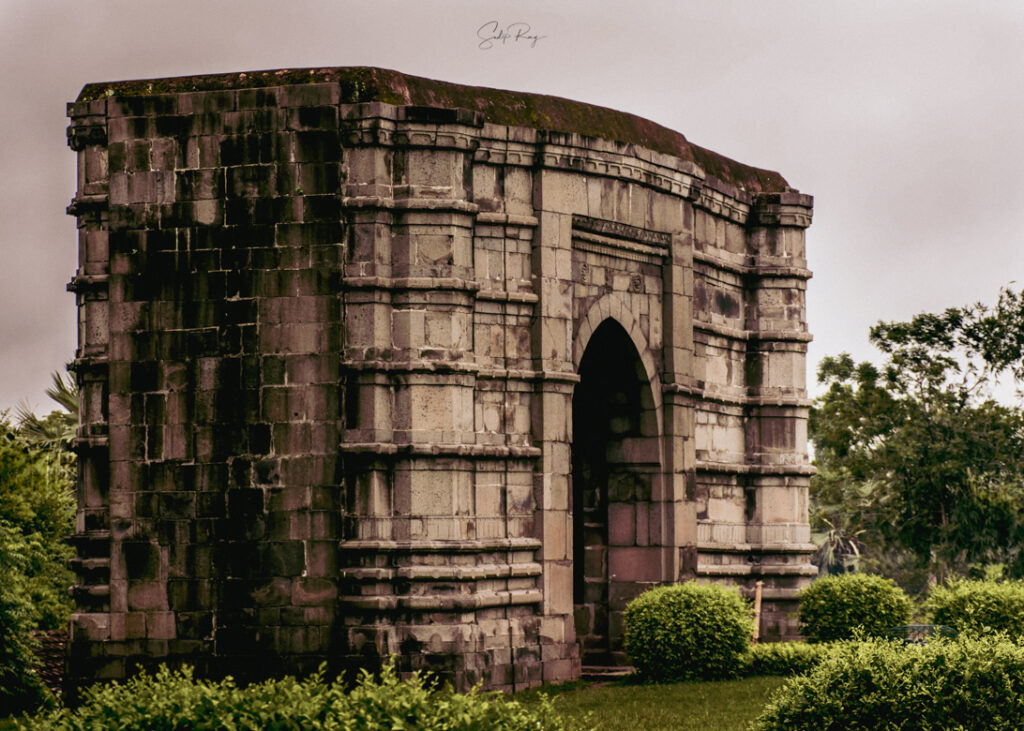
Lattan or Loton Mosque:
One of the best-preserved monuments of Malda, it was constructed during the reign of Sultan Yusuf Shah. It is built aesthetically with red bricks and composed of a square prayer chamber with a single domed roof. The mosque was once decorated with multi-coloured glazed tiles of various patterns.
Tantipara Mosque:
As the mosque was situated in the weavers’ colony, it was named Tantipara (‘tanti’ means weaver and ‘para’ is colony). It was built under the patronage of Sikandar Shah in 1369. The mosque is quadrangular in shape and once had ten domes.
Ramkeli:
Located near the Baro Shona Mosque, this hamlet is venerated by the Vaishnavas as Shri Chaitnyadeva stayed here for a few days before departing for Vrindavan. His footprints are devoutly preserved inside a small temple here, which is flanked by eight tanks namely, Rupsagar, Shyamkunda, Radhakunda, Lalitakunda, Bishakhakunda, Surabhikunda, Ranjakunda, and Indulekhakunda. These tanks were dug by Rup and Sanatan Goswami for saving the village of Ramkeli from severe scarcity of water. A huge fair is organized every year in the month of June to commemorate Mahaprabhu’s visit to Ramkeli.
Adina & Pandua:
The prime attractions around the Adina are as follows:
Adina Mosque:
One of the most famous landmarks of Malda, Adina Mosque was built by Sultan Sikandar Shah, the second ruler of the Ilyas Shahi dynasty. It was the largest mosque in the Indian sub-continent when its construction was completed in 1374. It was built to celebrate the dynasty’s twin victories against the Delhi Sultanate in the 14th century. Inspired by the hypostyle of the Ummayad Mosque of Damascus in Syria, the architecture of Adina Mosque assembled the features of Bengali, Arab, Persian, and Byzantine styles.
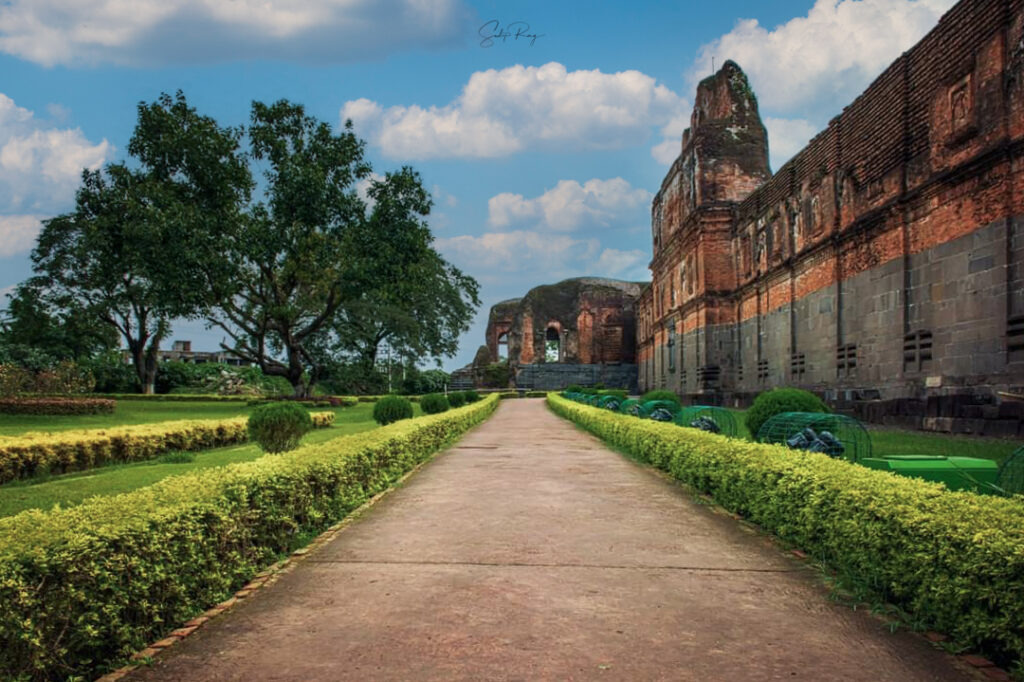
The Mosque was built with rubble masonry covered with bricks, stones, and coatings of stucco, plaster, concrete, and glazing. It had a huge open courtyard, with several hundred arches and domes. The Sultan’s tomb also lies inside the mosque, near the western walls.
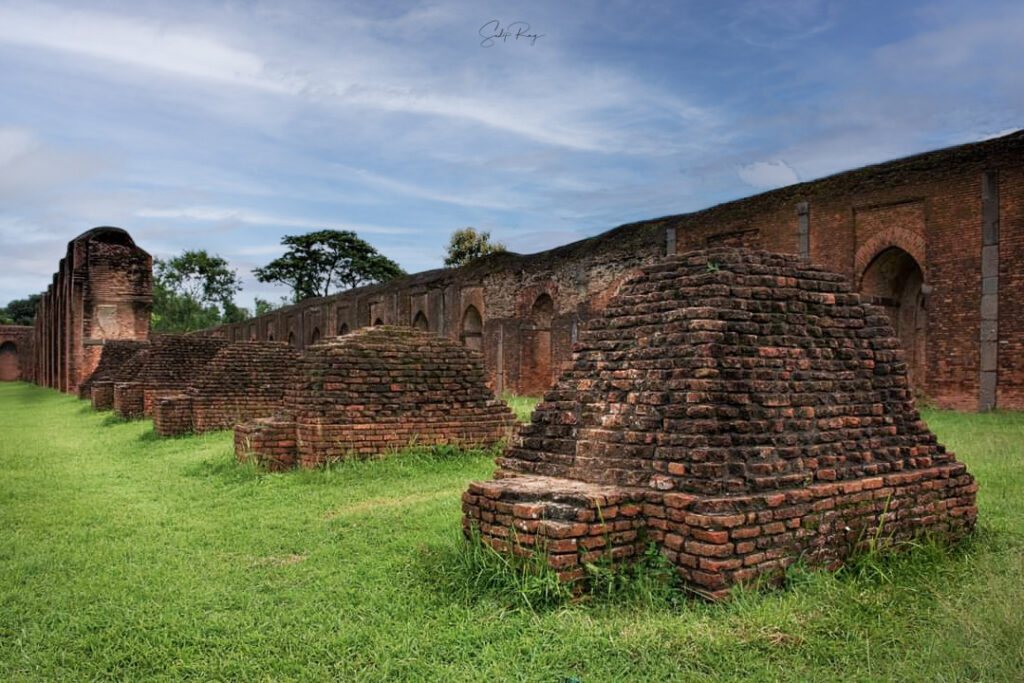
Interestingly, you will notice carvings of Hindu and Buddhist figures on the outer walls of the mosque.
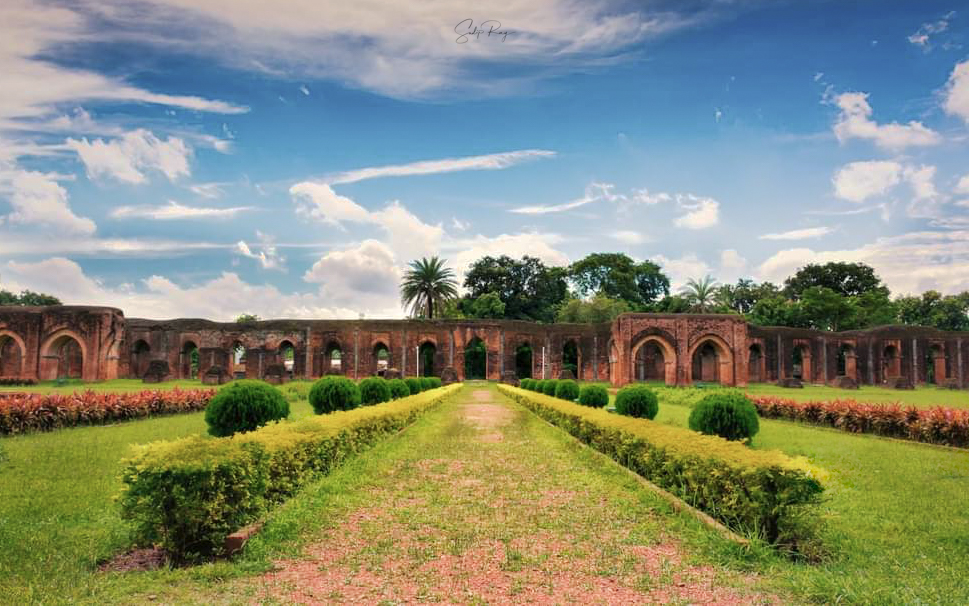
Eklakhi Mosque:
According to legends, one lakh rupees were spent on building this mosque. Hence, it was called ‘Eklakhi’, which translates to one lakh. Built in 1425, it houses three tombs, which probably belong to Sultan Jalaluddin Mohammad Shah, his wife, and his son. It is the earliest surviving square-shaped building with a single dome in Bengal. Its style was perhaps influenced by the terracotta and brick temples of pre-Islamic Bengal, which in turn resembled the thatched village huts.
Other places of attractions in Malda:
- The ruins of Nadadirghi Vihara at Jagjivanpur in Habibpur block.
- The archaeological museum at Malda Town.
- Silk weaving at Kaliachak block.
- The Adina Deer Park.
- The Jahuratala Temple in the outskirts of Malda Town.
- The Monoshkamona Kali Temple at Malda Town.
Important FAQs:
How to reach Malda:
- By train: The most convenient way to reach Malda is by taking an overnight train from Kolkata. All North Bengal and Assam-bound trains halt at Malda. The best train options are Gour Express, Darjeeling Express and Padatik Express from Sealdah, and Saraighat Express, Shatabdi Express and Vande Bharat Express from Howrah. Malda is also well-connected with various parts of India via railway.
- By bus: Multiple buses of NBSTC (North Bengal State Transportation Corporation) ply daily from Kolkata. However, these buses are mostly Spartan, and hence quite uncomfortable for a long 9-10 hours of journey. Alternatively, you can opt for Siliguri-bound sleeper Volvo buses, which are pretty comfy.
- By air: The nearest airport is Bagdogra (218 km), which is well-connected with the rest of India. After landing in Bagdogra, you can catch Kolkata-bound trains or buses to reach Malda.
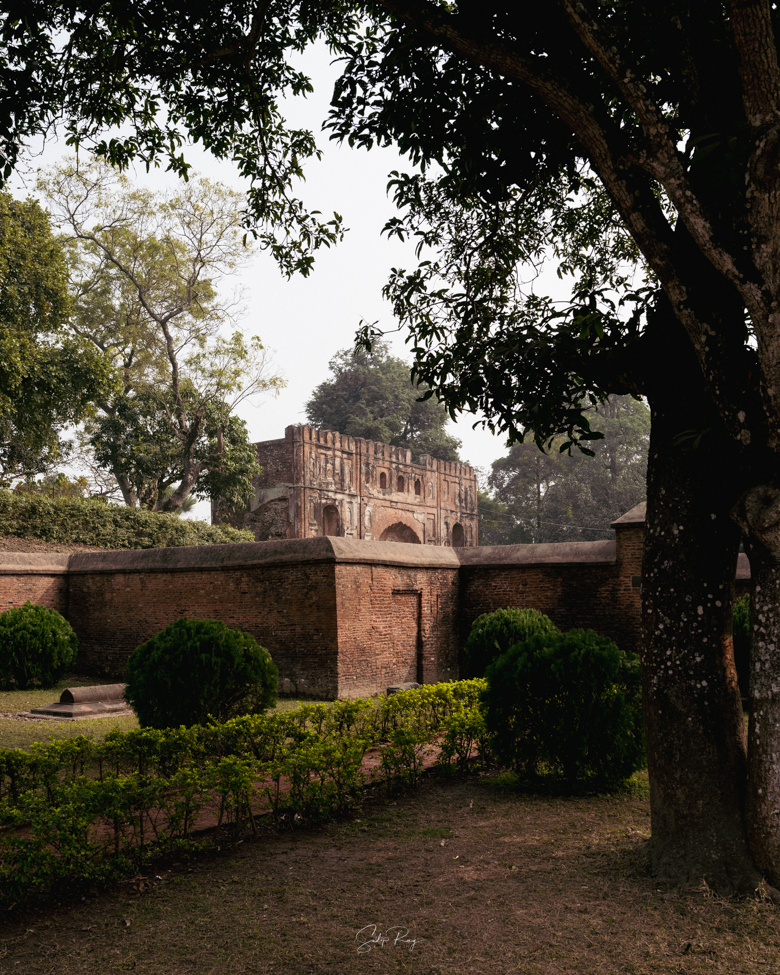
Where to stay in Malda:
You can go to Amrapali, the tourist lodge of WBTDCL. The lodge is centrally located at Rathbari in English Bazar. Room rent ranges from INR 1100 to 2000 per night. You can book rooms from here. You can also book Hotel Kalinga, Hotel Gitanjali, and Hotel Golden Park.
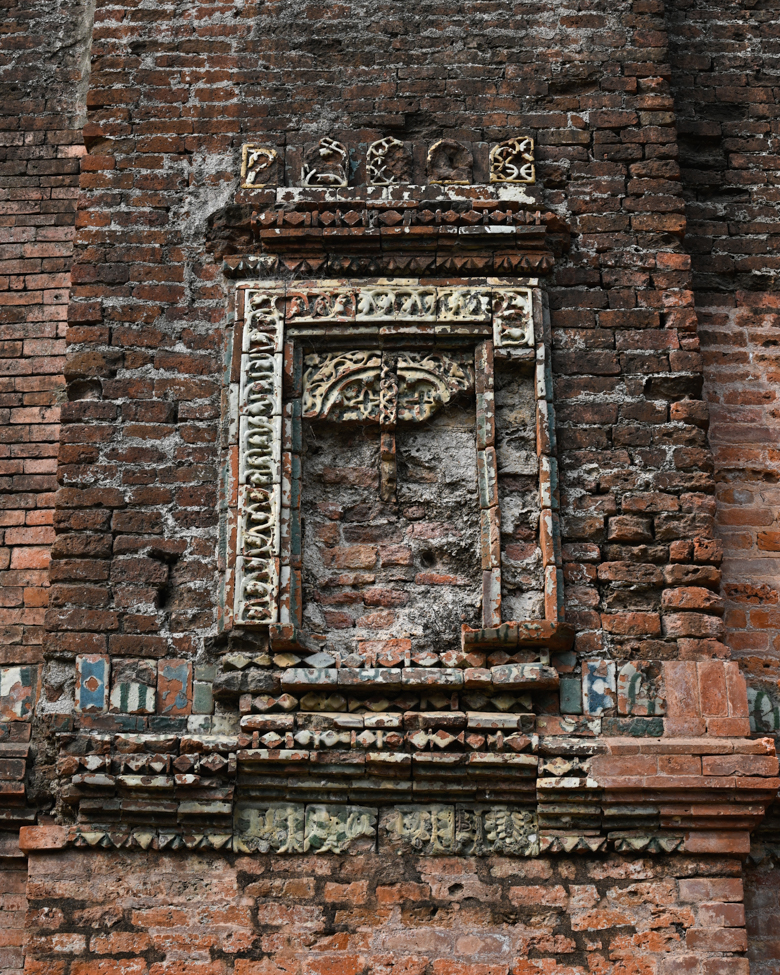
Where to eat at Malda:
Apart from Pizza Hut, Dominos, and KFC, there is Aheli for Bengali food, Mr. & Mrs Idli for south Indian dishes, and Mango Leaf for north Indian cuisine.
Know before you go to Malda:
1. The best time to visit Malda is in the winter months (November to February). But, avoid the dates of 25th December, 31st December, and 1st January as the sites get swarmed with local people and picnic parties. However, if you want to enjoy the luscious mangoes of Malda, you need to visit in May – June. Although, summers are extremely hot here, thus exploring the historical sites will be difficult.
2. One day is enough for exploring Gour and Adina. Start your exploration in the early morning by visiting the attractions of Gour. After lunch, go to Adina and Pandua. For Jagjivanpur, you will need another day.
3. Relish the two famous heritage sweets of Malda, Roshkodom and Kansat from Radharani Sweets. Also, savour the garlic-infused miniature ‘shingara’ or samosa from Rajdhani Sweets.
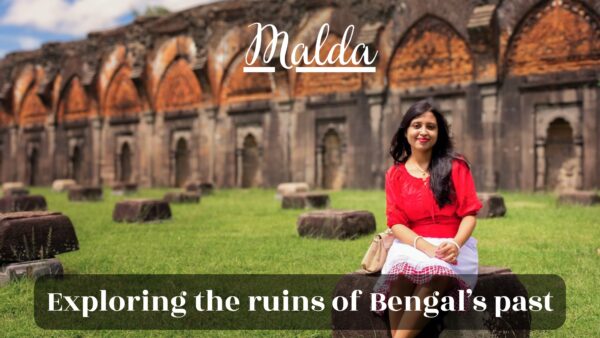


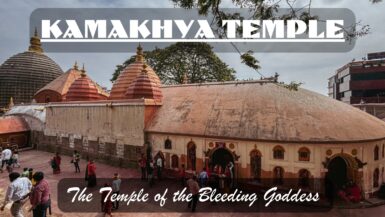
Leave a reply